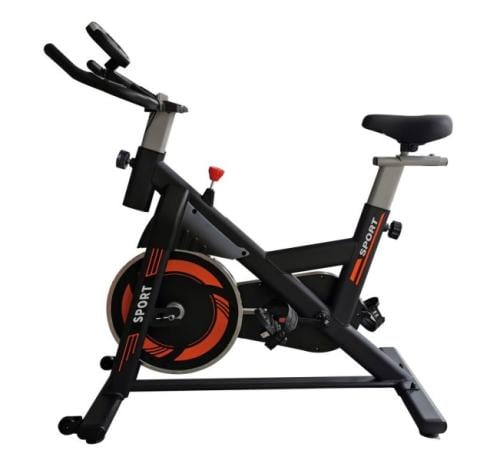
Types of Exercise Bikes
Upright Bikes: These are the absolute most traditional form of exercise bikes. They resemble a typical bicycle and are excellent for cardiovascular workouts and leg strength. They're usually compact and offer many different resistance levels.
Recumbent Bikes: Recumbent bikes have a more stimulating seating position with back support, making them a great choice if you have spine issues or joint concerns. They're generally convenient but can use up more space.
Spin Bikes: Spin bikes were created for high-intensity workouts and mimic the knowledge of outdoor cycling. They're favored by serious cyclists and those buying more difficult workout.
Dual-Action Bikes: These bikes include handlebars that move as you pedal, providing a full-body workout. They can be quite a great option if you wish to engage both your upper and lower body simultaneously.
Key Features to Consider
Resistance Levels: Exercise bikes use various kinds of resistance systems, including magnetic, friction, and fan-based. Magnetic resistance offers smooth and quiet operation, while friction resistance could be more intense but noisier. Fan-based resistance adjusts to your effort level, providing an alternative workout experience.
Adjustability: Choose a bike with adjustable seats and handlebars. This ensures as possible customize the bike to fit your system size and achieve an appropriate riding position.
Console and Programs: Modern exercise bikes include various consoles that track metrics such as for instance speed, distance, time, and heart rate. Some bikes also offer pre-set workout programs, interactive training sessions, and connectivity with fitness apps.
Size and Design: Measure your available space before purchasing. Ensure the bike you decide on fits comfortably in your workout area. Consider whether you want a smaller sized model or one with additional features like built-in speakers or a tablet holder.
Weight Capacity: Check the bike's weight capacity to make sure it may safely support all users. Most exercise bikes can handle weights including 250 to 350 pounds.
Budget Considerations
Exercise bikes come in a wide selection of prices, from budget models to high-end options. Set a budget on the basis of the features that are essential to you. Generally, higher-priced bikes offer more complex features and greater durability.
Budget Options: If you're on a tight budget, you can still find reliable bikes that cover basic needs like adjustable resistance and an appropriate seat.
Mid-Range Options: In this range, you might find bikes with additional features such as for instance programmable workouts and heart rate monitors.
High-End Options: Premium bikes often include advanced features like interactive touchscreens, customizable workout programs, and high build quality. They might also include extended warranties and superior customer support.
Maintenance and Warranty
Regular maintenance is essential to help keep your exercise bike in good working condition. Search for models offering easy-to-follow maintenance instructions and look at the accessibility to replacement parts.
Warranties vary between brands and models, so check what's covered and for how long. A good warranty can provide satisfaction and protect your investment.
Final Tips
Test Before You Buy: If at all possible, check out different models at a showroom or fitness store. This provides you with a sense for how the bike performs and how comfortable it is.
Read Reviews: Search for customer reviews and expert opinions on the models you're considering. This can provide insight to the bike's performance, durability, and user satisfaction.
Check Return Policies: Ensure owner has a reasonable return policy just in case the bike doesn't meet your expectations or has any issues.
By considering these factors, you will end up better equipped to choose the perfect exercise bike for the fitness goals. Whether you're aiming for a casual workout or intense training, the proper exercise bike can make you stay motivated and achieve your fitness objectives.